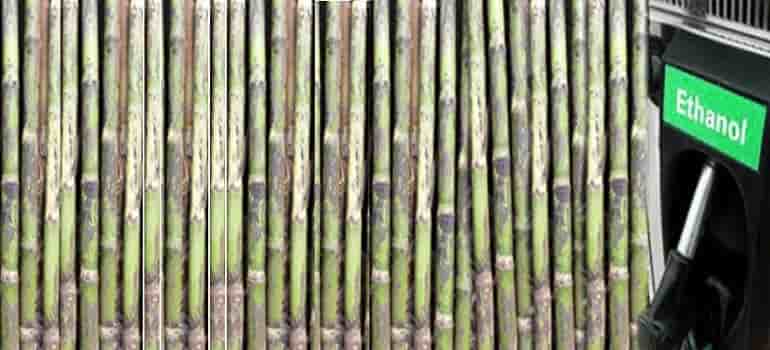
A global consensus is slowly emerging, on the need to transition from traditional fossil fuels to cleaner, greener alternatives. Nations across the world are working on a viable policy roadmap to usher in this shift, with the aim to mitigate the effects of climate change and decarbonise our future.
India has displayed a singular focus on environmental preservation and climate action. It has pledged to reduce the emission intensity of its GDP by 33-35% of 2005 levels by 2030 and was recently declared the only major economy to be ‘2 degrees compatible’ at the COP 25.
Achieving this ambitious target will require a conscious shift towards cleaner mobility. In India, the transport sector contributes close to 10% of the total national GHG emissions, with road transport contributing about 87%.
There are certain pathways to reduce the emissions from the sector, with alternatives such as sugarcane ethanol and emerging technologies like electric vehicles (EVs), being some of them.
Sugarcane-based ethanol has established itself as a viable avenue for reducing GHG emissions. Brazil’s success story stands as a testament to its efficacy. Brazil has some of the highest adoption rates of biofuel, which has led to a considerable reduction in GHG emissions and a marked improvement in air quality. In fact, in 2019, São Paulo in Brazil ranked 879th in pollution levels – thanks to nearly 80 percent of all cars and light-duty trucks running on pure sugarcane based ethanol or an ethanol-gas blend. Ethanol and bioenergy produced from sugar cane already constitute 17.4 percent of Brazil’s energy mix, replacing more than 48 percent of gasoline demand and avoiding 515 million tons of carbon dioxide emissions since 2003.
India can also potentially improve its air quality levels by introducing a mandatory ethanol blend and divert a part of its sugarcane production to produce ethanol fuel. India has already fixed a 10% blending target for mixing ethanol with petrol by 2022 and 20% by 2030. This is a step in the right direction.
The carbon emissions from sugarcane ethanol are amongst the lowest amongst all powertrains in use around the world, with hybrid and flex ethanol potentially having lower emissions than even electric vehicles.
India is rapidly moving towards its e-mobility transition, with the FAME-II scheme and recent policy incentives. However, large scale adoption of e-mobility depends on the establishment of a robust and extensive charging infrastructure. Thus an instant shift to electric mobility is not feasible and electrification of the fleet remains a long-term goal.
This clearly means that internal combustion vehicles (ICE) are set to remain on the roads in the near future. Sugarcane ethanol, thus is a solution that can usher in a transition towards decarbonization, right now.
There is a need for India to devise innovative solutions for reducing GHG emissions and thus, the shift towards e-mobility is indeed a welcome one. However, it is by no means the only solution, as there cannot be a one size fits all approach to intricate challenges like climate change. Having a wider spectrum of bespoke solutions is the way forward. Sugarcane-based ethanol using powertrains are amongst the best performing assets across the world and offer a clear pathway to GHG emission reduction and climate change mitigation.
AUTHOR

Evandro Gussi
CEO | UNICA
Evandro Gussi is the President and CEO of the Brazilian Sugarcane Industry Association – UNICA. Before that, he was a Brazilian Congressman. Among other achievements in the Congress, he was the author of the “RENOVABIO” act, a key landmark for the biofuels sector in Brazil. GUSSI is S.J.D., Doctor of Juridical Science, laureate by the University of São Paulo Law School (2009) and received a Masters degree in Law from the Law School of Federal University of Rio Grande do Sul (2005).
Views expressed in this article are those of the author and do not necessarily reflect those of the editors or publishers.

